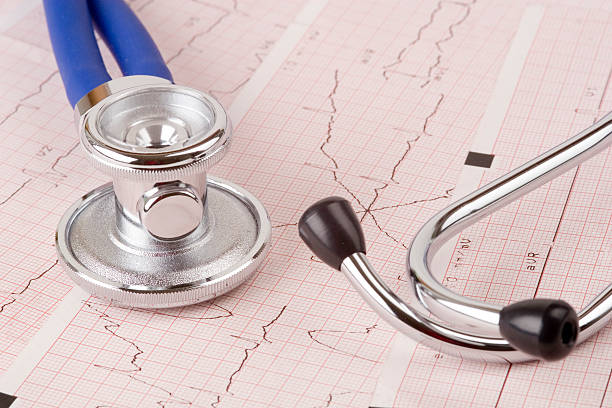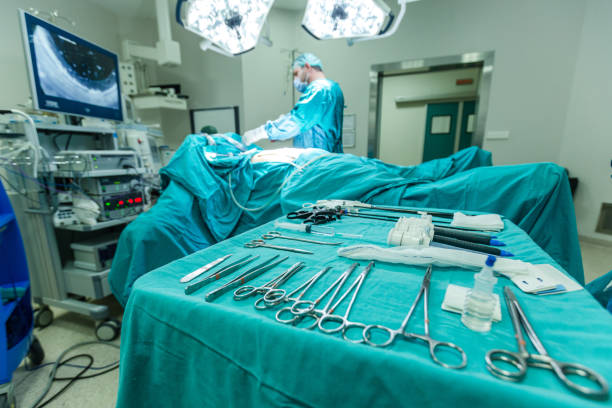Stethoscopes are a key tool in surgical care, especially before and after surgery. They help doctors and nurses listen to heartbeats, breathing, and other vital sounds. This ensures that the patient is stable and ready for the operation or recovering well afterward. In this guide, you’ll learn about the importance of stethoscopes in surgical pre- and post-operative care, and how they are used in different stages of surgical care.
What Are Stethoscopes and Why Are They Important?
Stethoscopes let healthcare workers listen to sounds inside your body. These sounds can tell if your heart, lungs, or other organs are working properly. During surgery, doctors need to constantly check your body’s vital signs to keep you safe.
The precordial stethoscope, a special type of stethoscope, is often used in surgery. It helps doctors hear continuous sounds during an operation, making it different from regular stethoscopes.
Precordial Stethoscope: What Makes It Special?
What Is a Precordial Stethoscope?
A precordial stethoscope is a small device placed on a patient’s chest. It stays in one spot, allowing the anesthesiologist to hear the heart and lungs at all times. This continuous sound helps catch problems immediately, such as breathing issues or heart rhythm changes.

How Is It Different From a Regular Stethoscope?
| Feature | Precordial Stethoscope | Regular Stethoscope |
| Placement | Fixed on the chest during surgery | Held in hand for short checks |
| Sound Monitoring | Continuous | Intermittent |
| Primary Use | During anesthesia and surgeries | General medical use |
A regular stethoscope is good for quick checks, like during a doctor’s visit. However, in the operating room, the precordial stethoscope is better because it works without needing constant attention.
Why Use Precordial Stethoscopes in Surgery?
During Anesthesia Management
When a patient is under anesthesia, their body can react in unexpected ways. For example, their breathing might slow down or their heart rate could change suddenly. A precordial stethoscope helps doctors hear these changes right away so they can respond quickly.
In Pediatric Surgeries
Precordial stethoscopes are especially useful for children. Kids have smaller airways and delicate hearts, so doctors need to be extra careful. The continuous monitoring provided by these stethoscopes helps keep young patients safe during surgery.
For Early Problem Detection
Precordial stethoscopes can alert doctors to issues like airway blockages, fluid in the lungs, or irregular heart rhythms. Early detection means faster treatment and better outcomes for the patient.
How to Use a Precordial Stethoscope
Using a precordial stethoscope is straightforward but requires attention to detail for accurate monitoring. Below is a step-by-step guide to help you use it effectively, whether in surgery or routine care.
Step 1: Choose the Right Precordial Stethoscope
Start by selecting a high-quality precordial stethoscope. Look for models that provide excellent sound clarity and are comfortable to place on the chest. Trusted brands are often available on platforms like Amazon.
Step 2: Identify the Placement Area
- The precordial stethoscope should be placed on the chest, typically near the heart (precordial area).
- For heart monitoring, position it over the left chest, near the apex of the heart.
- For lung monitoring, place it higher on the chest or back.

Correct placement ensures you hear heartbeats, breathing sounds, or any abnormalities.
Step 3: Secure the Stethoscope
- Use an adhesive disc, strap, or other securing methods to keep the stethoscope in place.
- Make sure it’s stable, as any movement can interfere with the sound.
This step is especially crucial during surgery, as the device must remain in the same position for continuous monitoring.
Step 4: Test the Sound
- Before starting, connect the precordial stethoscope to headphones or a speaker for clear listening.
- Test the device to ensure it is working properly and the sounds are audible without distortion.
Step 5: Monitor Continuously
- During use, listen carefully to the heart and lung sounds.
- Pay attention to any irregularities, such as changes in heart rhythm, breathing patterns, or unusual noises.
For anesthesia management, continuous monitoring is essential to detect airway blockages or heart rate changes early.
Step 6: Adjust When Necessary
- If the patient’s position changes, ensure the precordial stethoscope stays in place.
- Re-adjust the placement or secure it again if needed.
This ensures uninterrupted monitoring throughout the procedure.
Precordial Stethoscopes vs. Esophageal Stethoscopes
Sometimes, doctors use esophageal stethoscopes during surgery. These are inserted into the esophagus (food pipe) and sit close to the heart and lungs. While effective, esophageal stethoscopes are invasive and require more skill to use.
Here’s how they compare:
| Feature | Precordial Stethoscope | Esophageal Stethoscope |
| Placement | Outside the body (on the chest) | Inside the esophagus |
| Invasiveness | Non-invasive | Invasive |
| Ease of Use | Simple and easy | Requires specialized skill |
For most surgeries, the precordial stethoscope is preferred because it’s non-invasive and simpler to use.
Precordial Stethoscopes in Pre- and Post-Operative Care
Pre-Operative Care
Before surgery, stethoscopes help doctors check for conditions like:
- Heart murmurs
- Breathing issues
- Fluid in the lungs
This ensures the patient is ready for anesthesia and surgery.
Post-Operative Care
After surgery, stethoscopes are used to:
- Monitor breathing and heart rate
- Check for complications, such as infections or fluid buildup
- Ensure the patient is recovering well
Where Can You Buy a Precordial Stethoscope?
If you’re a medical professional, you can find precordial stethoscopes on platforms like Amazon. Look for models with good sound clarity, durability, and ease of use. Reviews from other professionals can help you choose the right one.

Benefits of Using a Precordial Stethoscope
- Continuous Monitoring: It listens to vital signs without interruption.
- Early Detection: Problems can be caught and fixed quickly.
- Non-Invasive: Safe and easy to use without entering the body.
- Portable: Lightweight and easy to carry in any setting.
Conclusion
Stethoscopes, especially precordial ones, are essential tools in surgical care. They help doctors monitor patients closely during anesthesia and catch problems early. Whether in pediatric or adult surgeries, precordial stethoscopes improve safety and outcomes.
If you’re in the healthcare field, investing in a high-quality precordial stethoscope can make a big difference. Choose one that fits your needs, and always prioritize patient safety.


